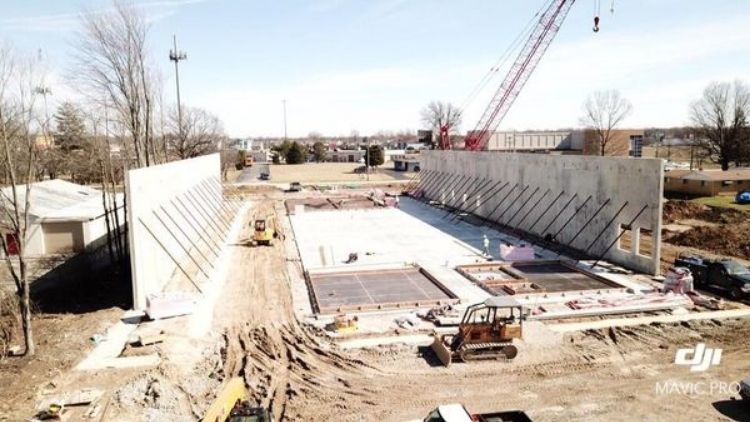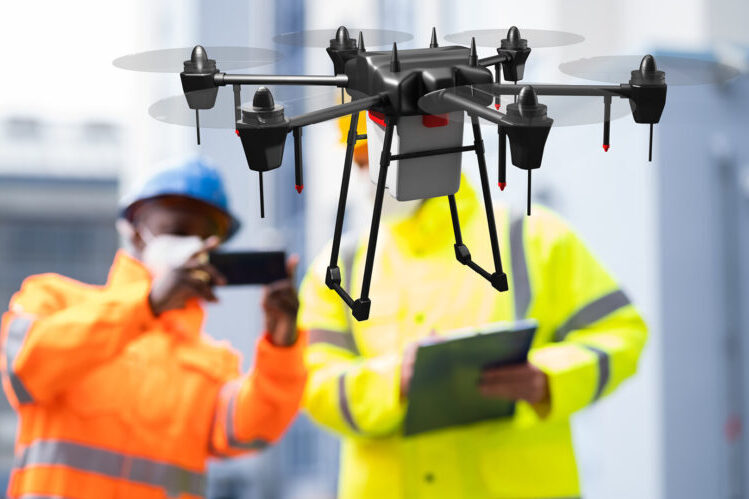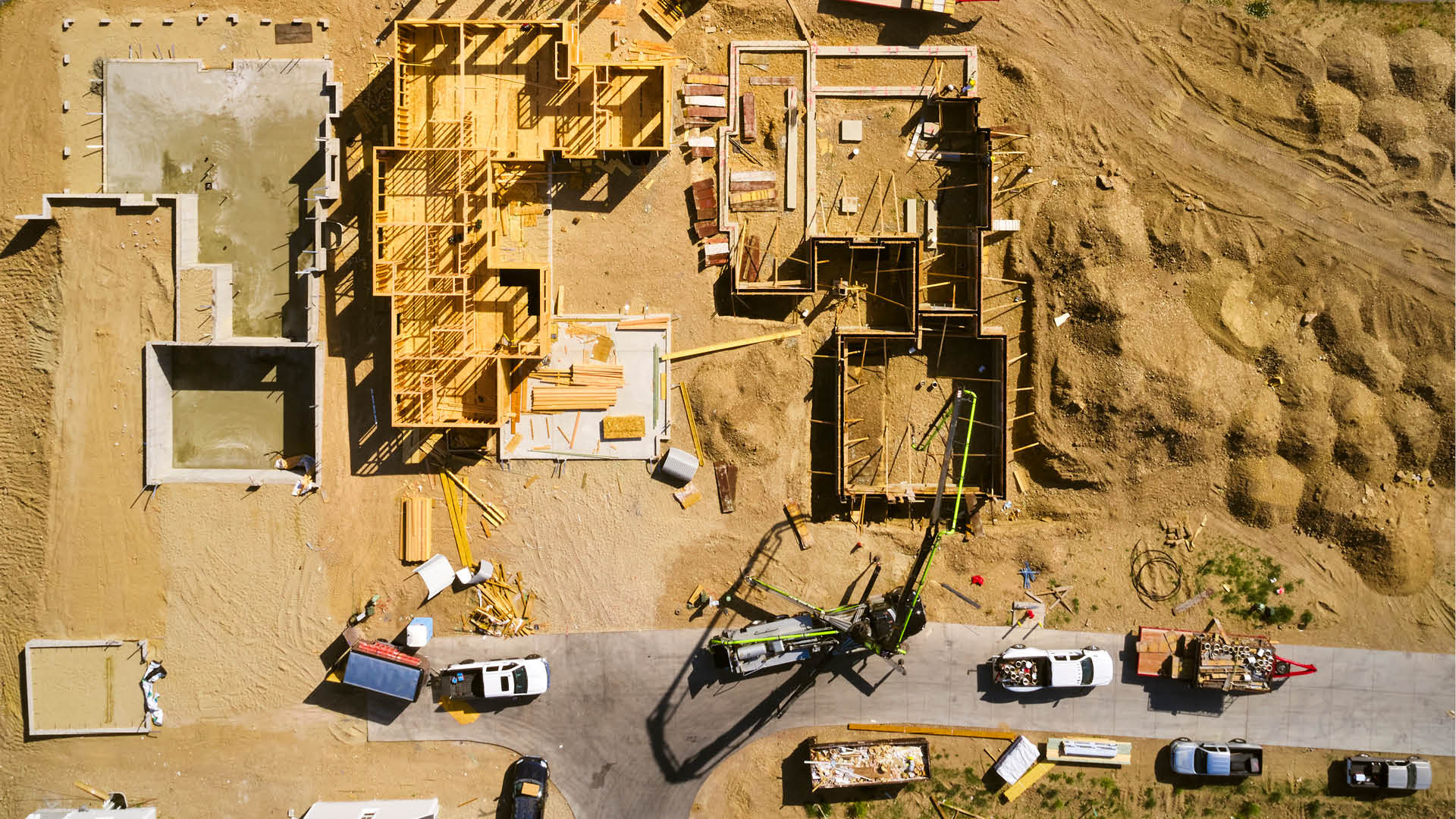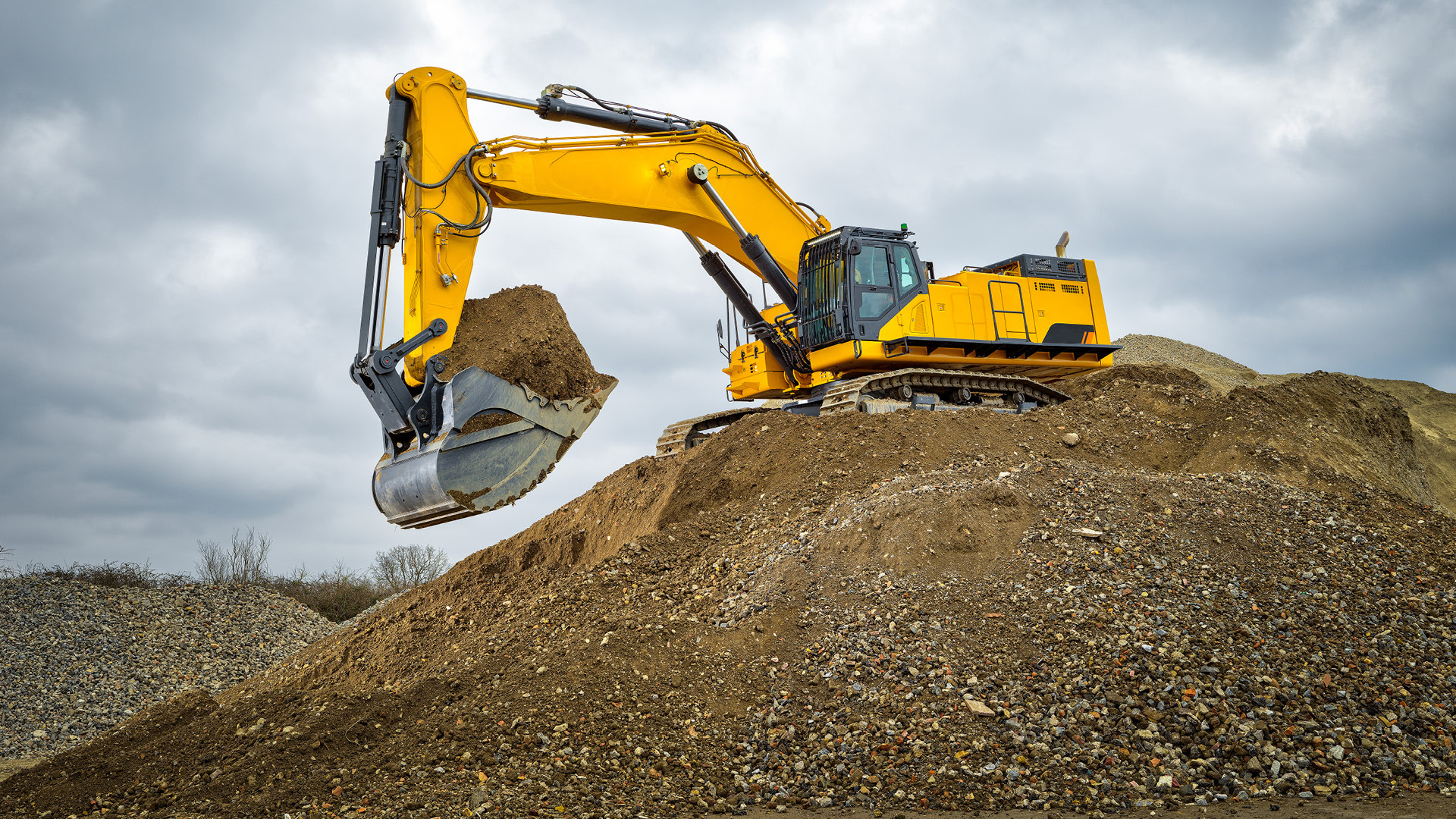Tilt-up construction is also called tilt wall construction. This is a building approach where the walls of a building are created on the ground, horizontally in large concrete panels. Then the panels are lifted or tilted up into position around the building slab. It is popular for warehouses, call centers, distribution centers, storage buildings, offices and retail stores. Tilt-wall buildings have been as many as 1.7 million square feet with individual wall panels as high as 91 feet and as heavy as 150 tons. Tilt-up construction is a heavy-duty solution for many projects.
Tilt-up construction has a long history, but it has been recently gaining widespread use. The Tilt-up Concrete Association reports that 15% of all US industrial buildings were built using tilt-up construction. In the south it accounts for as much as 75% of new one-story commercial building. Tilt-up construction is growing at a rate of almost 20% per year.
What are the benefits to a Tilt-up construction approach?
Size matters
There are many factors to consider when choosing between a tilt-up approach or a traditional steel building construction. Of course, a key factor is price. The price benefits depend on size. Concrete is a less expensive raw material than steel. However, tilt-up construction has some up front set costs such as renting a large crane. For buildings less than 50,000 square feet, adding these costs with the cost of the concrete makes tilt-up construction more expensive than traditional steel. However, once you reach building sizes greater than 50,000 square feet the lower price of the concrete begins to offset these fixed costs, and the method becomes more cost competitive. The larger the building, the more price advantageous tilt-up construction becomes.
Inclusive costs
When comparing prices, it is essential to be sure you include all elements. A typical steel building kit on its own is priced lower than a typical quote for a tilt-up building. Often, though, the cost for the kit does not include costs for any custom design modifications, foundation costs, permits, assembly cost, taxes, electric, plumbing, ductwork, interior finishing, environmental controls…etc. The quote for a tilt-up construction includes these elements. Be sure you are comparing apples to apples and have all the elements included in both prices.
Schedule and timeline
Choosing a construction approach is also impacted by your construction schedule. Tilt-up construction offers many opportunities to compress the schedule and build your project more quickly. Erecting tilt-up walls is faster than traditional construction. There is greater ability for overlapping project phases in tilt-up construction because the trades begin working earlier in the process. The use of ready-mix concrete from local sources also limits the impact of supply and transportation delays.
Location of project
Location is another factor in determining the type of construction that is best for your project. The building permit and building code requirements are different for different areas. Typically, urban areas, closer to downtown are more densely populated and have more stringent codes. One example is the fire codes. Steel buildings provide less fire protection than tilt-up construction or other concrete buildings. Steel is not combustible, but there is a potential for it to lose its shape and structural strength with exposure to great heat. In addition, a fire on one side of a metal wall generates heat in the wall and causes great damage on the other side. Steel building designers must use a variety of technologies in mitigating these fire resistance problems. A typical 6.5” concrete wall has a fire resistance rating of 4 or more hours.
Durability
Durability is another consideration when you are choosing a construction type for your project. Steel is reasonably durable, but concrete buildings typically require less upkeep and maintenance. Concrete does not have issues with corrosion, rotting, rust, or insect infestation. In California, where earthquakes are common, 90% of the single-story commercial buildings are done with tilt-up construction.
Damage losses
Damage is bound to occur, not just based on natural occurrences such as weather or earthquakes, but also based on the human factor. For example, buildings that are used for trucks and forklifts. When an accident happens, and it inevitably will, the damage by a vehicle to a concrete building tends to be more localized and less expensive than for a steel building.
Facility purpose
Also consider how the building is intended to be used when you are determining your best construction choice. In general, steel buildings work well for storage, indoor sports, workshops, and aircraft hangers. They are less suited for higher traffic buildings. Defense contracts such as prisons or other buildings requiring high security are much better suited to the impenetrable concrete compares to insecure steel.
Safety
Finally, safety in construction is also a factor in choosing your approach. A tilt-up construction building is safer because most of the work is done on the ground. Workers do not have to consistently climb high up onto steel girders to work.
At SCS Construction, we are here to help you determine which approach is best for your construction project. Whichever approach you choose, our experience and skills to make it happen. Call us at 317-272-0129 and let’s talk about what best fits your needs.
Are you on Facebook? We are, too. Let’s be friends!





Recent Comments